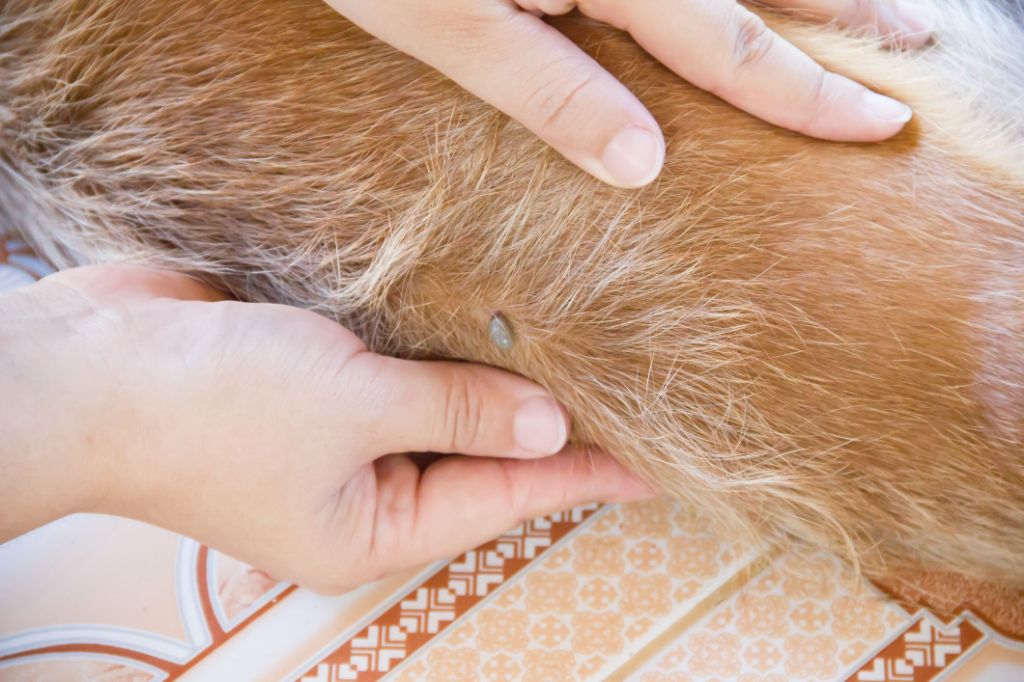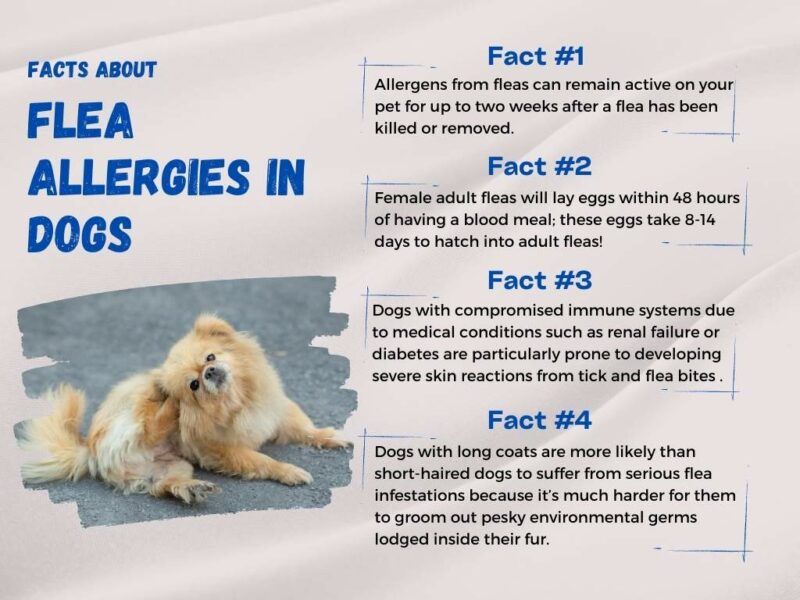Introduction
Fleas are one of the most common parasites affecting our canine companions. Up to 22% of dogs may have fleas at any given time, according to studies from veterinary hospitals (https://todaysveterinarypractice.com/infectious-disease/flea-prevalence-in-dogs-cats/). This makes fleas a very prevalent problem among dogs. Fleas cause significant irritation, itching, discomfort for affected dogs. Severe infestations can even lead to anemia or secondary skin infections. Therefore, it’s crucial for dog owners to understand where fleas may come from, how to check for them, and how to safely treat and prevent flea infestations in their pets. This article will provide an overview of the common sources of fleas in dogs, signs of infestation, and how to best protect your dog against these pesky parasites.
How Dogs Get Fleas
Fleas go through four main stages in their life cycle, each with its own role in propagating the infestation (Nexgard, 2022). First, adult fleas lay eggs on an animal host, such as a dog. These tiny white eggs fall off into carpets, bedding, and other areas. After 2-14 days, the eggs hatch into larvae, which feed on organic debris found in their environment. The larvae then spin a protective cocoon called a pupa around themselves. Inside this pupa, the larvae metamorphosize into adult fleas. After 1-2 weeks in the pupa stage, the adult fleas emerge hungry and ready to feed. The entire life cycle takes around 2-3 weeks (Pet Friendly Box, 2022).

Adult fleas living on dogs take blood meals and lay eggs, continuing the cycle. Fleas spread when dogs come into contact with infested areas and pick up eggs, larvae, and adult fleas in their fur. Common hot spots for transmission include carpets, upholstered furniture, pet crates and beds, and areas frequented by wild animals. Adult fleas can also jump onto passing dogs from their current hosts. Since fleas thrive in warm, humid environments, infestations peak during summer months (TryFi, 2022).
Common Places Fleas Hide
Fleas can be found hiding in many areas around the house and on your dog’s body. Some of the most common places that fleas like to hide include:

- In carpet fibers and under carpeting – fleas thrive in the darkness and warmth found deep in carpets (Flea City 101: Where Fleas Hide In Your Home – We Are Family)
- Inside cracks and crevices in floors and furniture – fleas can squeeze into very tight spaces that are difficult to clean (How to Prevent Fleas in Your Home – Adams)
- Inside pet bedding and pillows – flea eggs and larvae can be found in soft fabrics
- Under furniture cushions – fleas thrive in dark undisturbed areas
- On your dog’s tail – the tail provides thick fur for fleas to hide in (Where Do Fleas Hide? 5 Places You May Find …)
- In your dog’s armpits and groin area – fleas target warmer areas on a dog’s body
- On the dog’s belly and hind legs – prime real estate for fleas due to access to blood vessels
Being aware of these common hiding spots can help you locate and eliminate flea infestations more effectively.
Diagnosing a Flea Infestation

Fleas are incredibly small insects, so they can be tricky to spot. Here are some of the most common signs of a flea infestation on your dog:
Flea dirt – Small black specks that resemble ground pepper on your dog’s coat. These specks are actually flea feces and contain digested blood. Brush some onto a white paper towel and add a drop of water – if it turns red, it’s flea dirt.
Scratching and biting – Your dog may scratch, bite and lick themselves more than usual as fleas bite and cause itchiness.
Hair loss – Excessive scratching can lead to patches of hair loss, often around the base of the tail, legs, belly or neck.
Red irritated skin – Flea bites often cause red bumps and inflammation on your dog’s skin that may scab over.
Seeing live fleas – Look closely through your dog’s fur, especially on the belly, for tiny dark insects crawling around.
To check thoroughly, use a flea comb through your dog’s coat to reveal live fleas. Start around the hind legs and base of the tail.1 Comb a section at a time and dip the comb in a bowl of soapy water to kill any fleas that you catch.
Risk Factors
Certain elements can make dogs more susceptible to flea infestations. According to studies, younger dogs under 12 months old are at higher risk for fleas compared to adult dogs (https://pubmed.ncbi.nlm.nih.gov/36621899/). Additionally, dogs that spend time outdoors in grassy areas or woods have increased exposure to fleas and their eggs (https://vetster.com/en/conditions/dog/flea-infestation-and-flea-prevention-in-dogs). Dogs that live in warm, humid climates are also at greater risk since these environments allow fleas to thrive and reproduce faster. Factors like poor grooming and hygiene can contribute as well, since fleas are not removed from the dog’s coat regularly. Finally, dogs that live with other flea-infested pets are more likely to get fleas themselves through close contact.

In summary, young age, time outdoors, warm climates, poor hygiene, and exposure to other infested pets are key risk factors that make flea infestations more likely in dogs.
Prevention Tips
There are several effective ways to prevent fleas from infesting your dog and home. Some tips include:
- Use flea prevention medication prescribed by your veterinarian. Topical treatments like Frontline, Advantage II, or Seresto collars can repel and kill fleas.
- Vacuum frequently to remove eggs and larvae from your home. Be sure to empty the vacuum bag outside afterwards.
- Wash your dog’s bedding regularly in hot water to kill any fleas or eggs.
- Use natural repellents on your dog such as cedar or lavender oil.
- Bathe your dog regularly with flea shampoo or dish soap to remove fleas on their coat.
- Treat your yard with sprays containing insect growth regulators, which prevent flea eggs from hatching.
Being proactive is key to keeping your dog flea-free. Consult your veterinarian to find the right prevention plan for your pet.
Treatment Options
There are several effective treatment options for getting rid of fleas on your dog. The most common methods involve the use of topical flea prevention products, oral medications, shampoos, dips, sprays, powders, or flea collars:
Topical Treatments: These products like Frontline Plus, Advantage II, or K9 Advantix II are applied to your dog’s skin each month and spread through their oils to kill fleas and ticks. They are very effective when used properly. Pros are they kill fleas quickly and provide ongoing protection. Cons are they can be messy to apply and don’t kill fleas already on your pet or in your home.
Oral Medications: Chewable pills like Capstar or Nexgard given monthly kill fleas rapidly on your dog’s body. Pros are they start working very fast. Cons are they require regular dosing, don’t provide residual protection, and don’t kill fleas in your home.
Shampoos and Dips: Special anti-flea shampoos can help wash away some fleas and eggs. Dips like Vectra 3D should be professionally applied for thorough coverage. Pros are they can quickly kill many fleas on your dog. Cons are effects are short-lived once dry and do not kill fleas in your home.
Sprays, Powders, and Collars: There are sprays like Virbac Knockout and powders you can apply to your dog. Flea collars like the Seresto collar release insecticide. Pros are they can kill some fleas with proper use. Cons are they may not be as effective as other options and must be applied correctly.
For severe infestations, a multipronged approach using several methods together is often most effective. Consult your veterinarian for the best treatment plan for your dog’s fleas.
Natural Remedies
There are several natural ways to repel and kill fleas without the use of harsh chemicals. Some popular natural remedies include:
Apple Cider Vinegar – Mix equal parts apple cider vinegar and water in a spray bottle. Spray directly onto your dog’s coat and let sit for 5-10 minutes before rinsing. The acidic properties of apple cider vinegar make the dog’s skin inhospitable to fleas (Source).
Lemon Juice – Squeeze fresh lemon juice into a bowl of water and use it to rinse your dog’s coat. You can also mix lemon juice with vinegar or witch hazel. The citrus acts as a natural flea repellent (Source).
Dish Soap – Use a flea comb and dish soap diluted in water to kill adult fleas on your dog. The soap helps remove fleas from the coat and drowns them (Source).
Herbal Sprays – Make a natural flea spray using ingredients like rosemary, peppermint, thyme, or citrus oils. Mist onto your dog’s coat and gently work into the fur down to the skin.
Diatomaceous Earth – This powder dehydrates and kills fleas within a day of application. Sprinkle onto your dog’s coat, rub into the fur, then brush out. Reapply after bathing or swimming.
When to See a Vet
You should take your dog to the vet for flea treatment in certain cases:
- If over-the-counter treatments have not been effective at getting rid of the fleas after following directions properly (1).
- If your dog is scratching and biting itself excessively, causing skin damage or hair loss from the fleas (2).
- If you see signs of a skin infection like redness, swelling, discharge or a bad odor, which can develop from flea bites (3).
- If your dog is lethargic, seems depressed or is not eating well due to the flea infestation (2).
- If your dog has other medical conditions like anemia that could be worsened by flea bites and blood loss (1).
- If you have a puppy or elderly dog, as they can become anemic more quickly than other dogs from flea infestations (3).
- If you see flea dirt or flea eggs on your pet, signaling a heavy infestation in the home (1).
- If you suspect your dog may have tapeworms, which can be transmitted by fleas (2).
In severe flea infestations, your vet may recommend veterinary prescription treatments like flea collars, oral/topical medication or flea shampoos to fully rid your pet and home of the parasites. They can also help relieve any skin irritation caused by the fleas and check for any secondary infections that may require antibiotics or antifungals (1,3). Don’t delay in seeking veterinary care if over-the-counter flea treatments do not seem to be working or your dog is continuing to suffer from the fleas.
Sources:
(1) https://www.webmd.com/pets/remove-fleas-from-pet
(2) https://www.petmd.com/dog/general-health/how-to-handle-fleas-on-dogs
(3) https://www.lakeshorevetandpetlodge.com/blog-posts/why-its-important-to-take-your-pet-with-fleas-to-the-vet
Conclusion
To recap, there are several common ways dogs can get fleas, including from other pets, the outdoors, and infested environments. Knowing where your dog spends time and being aware of flea hotspots is key to prevention. Regularly checking your dog’s skin and coat for signs of fleas can help catch an infestation early. While fleas can be difficult to control, there are effective treatment options available, both natural remedies and veterinarian-prescribed products. Controlling fleas is crucial to keeping your dog comfortable, healthy and preventing house infestations. Being diligent about flea prevention and responding quickly when fleas are detected is the best way to stop the parasites from taking over your home and your dog’s coat.
